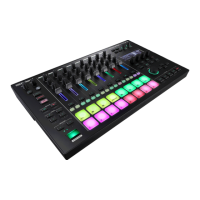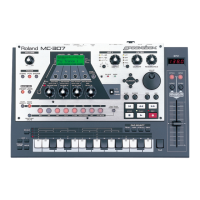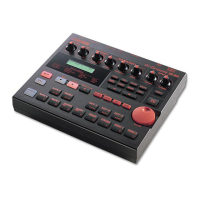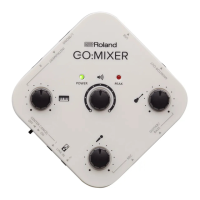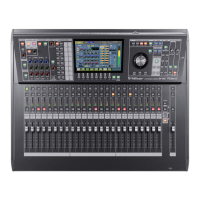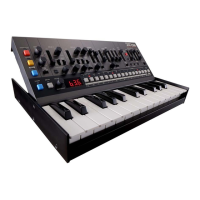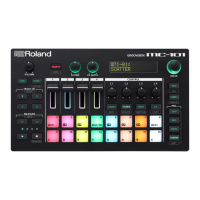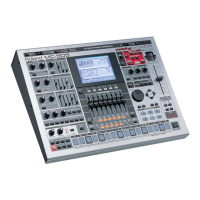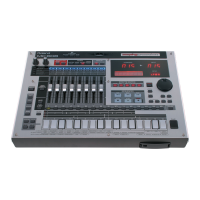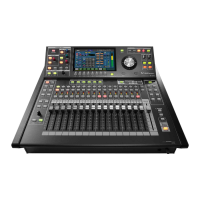24
Chapter 3. About the D-FIELD
Improvising along with a chord progression (ADLIB)
After pressing one of the areas in the lower half of the D-FIELD, move your finger in the left/right direction to play an ad-lib
performance. While sound is being produced, you can move your finger upward to apply modulation.
fig.Adlib
➔ Changing the D-FIELD settings (p. 22)
fig.Scale
Making detailed settings
1. Hold down [ADLIB] and press [EDIT].
2. Press [ENTER] to select the desired parameter.
3. Turn [VALUE] to modify the value.
Display Explanation Setting
TYPE Select how the sound will be
played.
MAN (MANUAL):
Notes of any pitch and duration are
available for play at will.
ARP (ARPEGGIO):
Play automatic arpeggios.
X Specify the scale. Scale 1–Scale 9
Y Raise or lower the pitch in
octave units.
-3–3
Display Parameter Explanation Setting
TYPE Select how the sound will be played. MAN (MANUAL):
Notes of any pitch and duration
are available for play at will.
ARP (ARPEGGIO):
Play automatic arpeggios.
STYLE Select how the sound will be played when TYPE is “AR-
PEGGIO.”
Refer to “Arpeggio settings” (p.
28).
* Arpeggio settings are common
to Adlib and Arpeggiator 1 and
2.
MOTIF Specify the order in which the component notes of the
chord will sound.
BEAT PATTERN Specify the pattern of accent locations and note lengths.
SHUFFLE RATE You can vary the timing of the backbeats to create shuffle
rhythms. With a setting of 50%, the notes will be spaced
equally. As this value is increased, the notes will be played
with a more “dotted” feel.
* When the Beat Pattern setting is 1/4, no “shuffle” feel
will be applied even if you increase the Shuffle Rate.
50–90(%)
ACCENT RATE You can add expression to the arpeggio by varying the
strength and note length of the accented notes. Increasing
this value will produce a greater sense of groove.
0–100
OCTAVE RANGE Specify the pitch range of the arpeggio in octave units.
Lowering this value below 0 will cause the arpeggio to be
played in a pitch range below the chord you specified.
-3–3
ROOT Specify the root note of the chord. C–B
SCALE Specify the scale. Scale 1–Scale 9
OCTAVE SHIFT Raise or lower the pitch that is sounded, in units of an oc-
tave.
-3–3
Pitch
Modulation
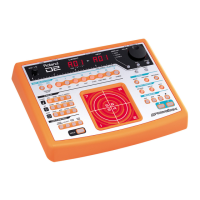
